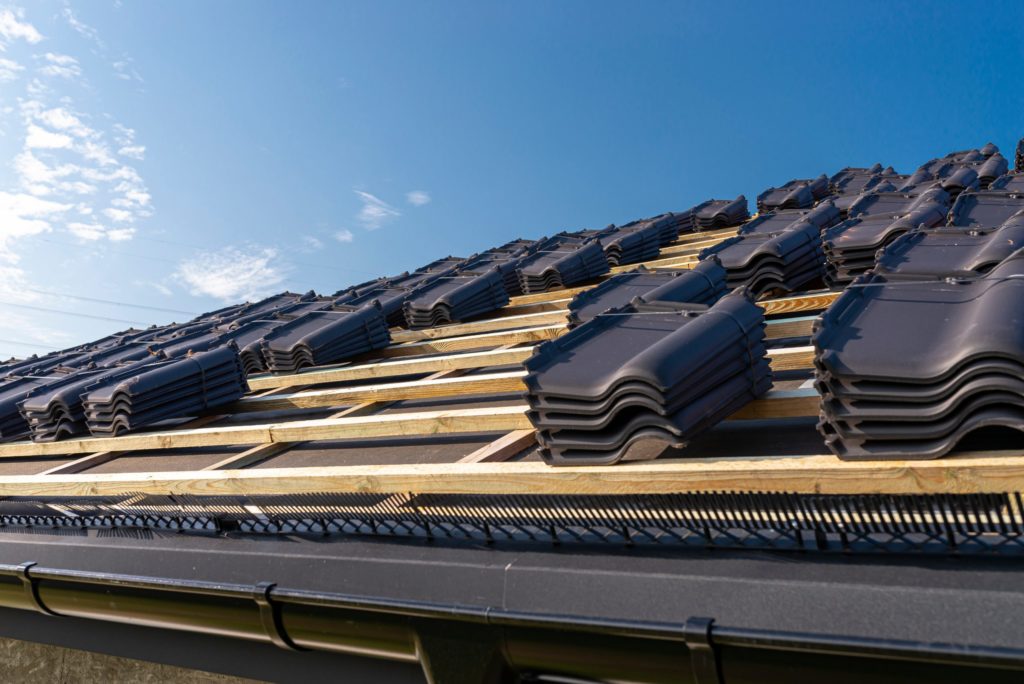Many roofing materials are available on the market, each with its own advantages and disadvantages. Depending on the aesthetics you’re looking for and your location, you’ll want to research the best materials for your roof thoroughly. In this article, we will look at the different types of roofing materials and which one is best for your home. Keep reading to learn more.
Tile Roofs
Tile roofs are a type of roofing material made of ceramic or clay tiles. These tiles are typically square or rectangular and are laid in a series of overlapping rows, similar to shingles. Tile roofs are durable and can last for a long time, making them a popular choice for homes in areas that experience a wide variety of unpredictable weather conditions. If this material gets damaged, it can be efficiently fixed by Lawrenceville roofing or your local roofer. Additionally, tile roofs are often more aesthetically pleasing than other types of roofing materials and can add value to your home. However, they can be expensive to install and require regular maintenance to ensure the tiles remain watertight. If you live in a hot and humid climate, consider investing in clay tile roof materials, as they handle the heat and moisture well.
Metal Roofs
Different types of metal can be used to create a metal roof, including aluminum, copper, and steel. Metal roofs are becoming increasingly popular because they are durable and can last for many years. They also come in various colors and styles, so you can choose one that will match the look of your home. Another advantage of metal roofs is that they are energy-efficient. This material reflects heat away from the house on hot, sunny days, which can help keep your home cool. Because of this, metal roofs are great for homeowners who live in humid climates, as moisture does not deteriorate metal quickly. And in the wintertime, they retain heat inside the house, which can help save on heating costs.
Composite Roofs
Composite roofing is a material that is made up of multiple layers. The top layer is usually made of asphalt, while the bottom layer is typically made of fiberglass or some other type of material. Composite roofs are often chosen because they are very durable and can last for many years. They are also resistant to fire and wind damage, which makes them a good option for homes in areas that experience severe weather conditions.
Asphalt and Wood Roofs
Asphalt is one of the most common types of roofing material. They are made of fiberglass or materials saturated in asphalt and then coated with ceramic to protect them from severe weather. More notably, asphalt roofing materials are affordable, durable, and simple to install. This is a great option for new homeowners who are looking for something simple and durable.
Wood roofs are made from natural materials and are a popular choice for homes in rural areas. They are durable and can last for up to 30 years. However, they are more expensive than asphalt shingles and require more ongoing maintenance. Homeowners should avoid wood roofs unless they live in a dry area and don’t mind keeping up with roof repairs.
EPDM Rubber Membrane Roofing
EPDM rubber is an M-Class rubber that’s affordable, durable, and lasts a long time. This type of roofing is made of synthetic rubber and can be installed in temperatures as low as -40 degrees Fahrenheit, so it’s great for people who live in cold climates. It is also resistant to tears, punctures, and UV damage. EPDM roofs have been known to last for up to forty years.
No one roofing material is perfect for every home, so it’s important to understand the pros and cons of each type before making a decision. In general, however, most homeowners will benefit from using durable and weather-resistant roofing material, such as metal, tile, or slate.

